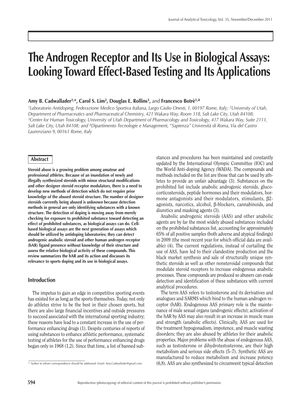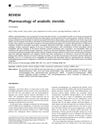The Androgen Receptor and Its Use in Biological Assays: Looking Toward Effect-Based Testing and Its Applications
November 2011
in “
Journal of Analytical Toxicology
”

TLDR Scientists have developed a new method to detect steroid abuse in athletes using cell-based tests, which could be the future of anti-doping methods.
In 2011, researchers Cadwallader, Lim, Rollins, and Botrè proposed a new method for detecting steroid abuse in athletes using cell-based biological assays. Traditional detection methods were becoming less effective due to the creation of new, structurally unique synthetic steroids. The human androgen receptor (hAR), expressed in all major physiological systems, was used in these assays to detect androgenic anabolic steroids and other hAR ligands, regardless of their structure. The hAR plays a role in the repair and maintenance of skeletal muscle and is the primary site of the anabolic action of steroids. The document also discussed the adverse effects of Anabolic-Androgenic Steroids (AAS) such as androgenic alopecia (male pattern baldness), acne, scalp hair loss, and increased risk of cardiovascular disease. The development of Selective Androgen Receptor Modulators (SARMs) was also mentioned, which can exert tissue-specific anabolic effects, useful for medical treatment of muscle wasting diseases and performance enhancement in athletes. The researchers concluded that these biological assays could be the next generation of detection methods in the anti-doping field.

